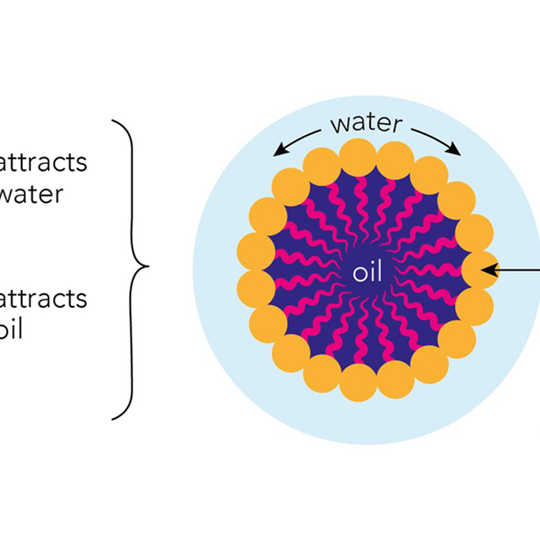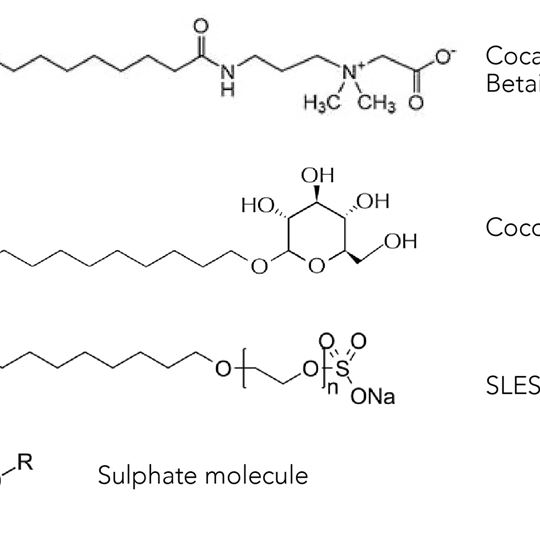Why Use Sulphates in Shampoo?

Shampoos are cosmetic products usually in liquid format, applied to the hair during the wet stage of hair washing. They contain ingredients which bind to dirt, oil and particles on the hair and carry them away when the hair is rinsed.
Shampoos contain SURFace ACTive ageNTS (aka. Surfactants) which have hydrophilic (water-loving heads and hydrophobic (water-hating) tails, where the tails are attracted to and attach to the particles on the hair. The surfactants are rinsed away along with the particles on the hair surface.

In addition to surfactants, shampoos also contain some form of moisturising ingredient (like glycerin), fragrance (to make the product and your hair smell nice), pH adjuster (to make sure the product isn’t irritable to your scalp), thickener (to make the product have a thicker consistency) and preservatives (to ensure it remains free of microbe growth through its lifespan).
Shampoo products may also be different colours, some might look pearly or glittery, or some might be completely fragrance-free. The type of ingredients used in shampoos depends on what hair type the product is marketed for, age range and cost.
Sodium Lauryl Ether Sulfate (SLES) is a very common and well-known surfactant used in many personal care cleansing products due to its effectiveness. It can be found in shampoos, shower gels, hand washes and bath foams, to name a few product categories. It has great compatibility with other ingredients, it is cost-effective (due to its widespread use in the industry) and it is relatively easily accessible for manufacturers.
SLES as an ingredient generally comes in a concentrated liquid format, which is then diluted first before putting into the shampoo, to ensure the product can still do its job but at a level safe for the final intended use.
SLES is a surfactant within the sulphates group. "Sulfate" is the spelling recommended by IUPAC, but "sulphate" was traditionally used in British English.[1] Both spellings are correct.
Sulphates have received a lot of bad press in the last few years. However, sulphates are accepted as safe ingredients by the E.U, United States FDA, and Health Canada, and have been in cosmetic formulations since the 1930s.

Due to their excellent ability to clean, sulphate-based surfactants can sometimes be TOO effective at cleaning, and consumers may experience a little dryness or itching, especially if the scalp or skin is sensitive.
Consumers who experience problematic skin conditions (eczema or psoriasis) or have skin/scalp concerns may wish to purchase shampoos or cleansing products with a different type of surfactant. Aside from this, there is no reason to discontinue using sulphate-based shampoos and cleansing products if they are working for you. There isn’t any concrete evidence that sulphates are damaging to the skin or hair.[3]
There are other sulphate-based shampoos on the market that use Ammonium Lauryl sulphate or even SLES-free based surfactants like Sodium C14-16 Olefin Sulfonate, Sodium Lauroyl Methyl Isethionate, Cocamidopropyl Betaine or Decyl Glucoside. Some Sulfate-free shampoos may even contain NO lathering ingredients at all, which is why you might not get any foam from them, but it doesn’t necessarily mean they aren’t cleaning your hair. SLES-free shampoos can be great for hair that is already dry or damaged from colouring, bleaching or overuse of heat-styling, due to their milder properties.
Our haircare range is scientifically formulated with each hair type in mind. SLES is our primary cleansing agent in our shampoos, coupled with a milder co-surfactant called Cocamidopropyl Betaine (CAPB for short). CAPB is a naturally derived secondary surfactant used for boosting foam and giving a mild cleanse. We also use a blend of coco-glucoside and glyceryl oleate which is an all-natural, mild surfactant system derived from coconut oil, commonly found in natural products to provide lather but no scalp irritation. This blend helps to improve the wet combability of the hair and can also help thicken the consistency of the product. It helps soften and condition the skin/scalp by depositing glyceryl oleate on the surface.

